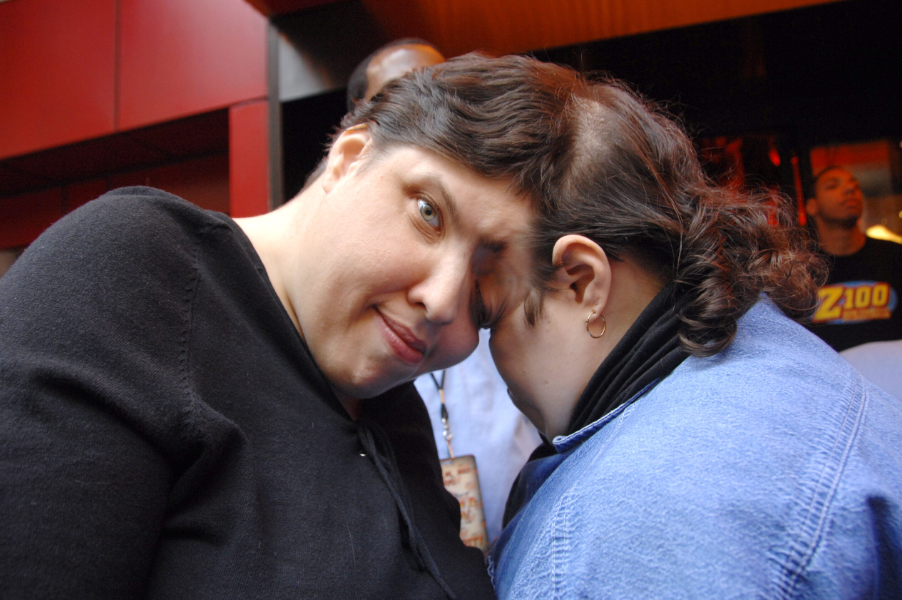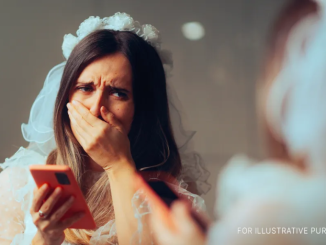
The world mourns the loss of the oldest known conjoined twins, Lori and George Schappell, who both passed away at the age of 62 in their Pennsylvania hometown.
Born on September 18, 1961, in Reading, Pennsylvania, Lori and George shared a rare connection, being conjoined at the skull while having separate bodies. They were linked by 30% of their brains and essential blood vessels.
Their incredible life journey came to a close on April 7 at the University of Pennsylvania Hospital in Philadelphia, as noted in their obituary. The specific cause of their passing has not been revealed.
George, who lived with spina bifida, used a mobility device for assistance, while Lori facilitated their movements by pushing and guiding his rolling stool. Their form of conjoined twins is exceptionally rare, affecting only about 2% to 6% of cases of congenital twins, according to NBC Today.

In a landmark moment for their lives, George transitioned in 2007, making them the first same-sex conjoined twins to identify as different genders, as recognized by Guinness World Records. During their trip to London in 2011 to celebrate their 50th birthday, George shared insights about his journey with The Sun, stating: “I knew from a very young age that I was supposed to be a boy”.
Both Lori and George completed their education at the Hiram G. Andrews Center and later worked at Reading Hospital. Despite their physical connection, they each pursued their own passions and hobbies. George followed his love for music as a country singer, captivating audiences globally, while Lori thrived as an accomplished bowler.
Remarkably, the Schappells enjoyed an independent lifestyle since turning 24. Initially, they lived in a care facility, then transitioned to a two-bedroom apartment where they each had their own space. They highlighted the significance of privacy, emphasizing that even with their physical bond, they found ways to enjoy solitude when needed
“Would we ever separate? Absolutely not”, George stated in a 1997 documentary: “My theory is, why fix what isn’t broken?”
Lori echoed this sentiment in a 2002 interview with the Los Angeles Times, saying: “I don’t believe in separation”. Our heartfelt condolences go out to the family and friends of Lori and George during this challenging time.
Foot Massage Chart: Target Pressure Points for Effective Pain Relief
What if I told you that a simple foot massage could improve your liver health or relieve a sore neck? You might be skeptical—and that’s understandable. How could massaging pressure points in your feet impact other parts of your body? If you’re not skeptical, you might be surprised, or perhaps you’ve already heard of reflexology.
Reflexology is a therapeutic practice that promotes pain relief and overall health by stimulating specific pressure points on the feet and hands. While many people visit professional reflexologists, you can also experience its benefits at home. Let’s explore how reflexology works, its health benefits, and how you can perform it yourself.
How Does Reflexology Work?

Reflexology is based on the concept that specific “zones” or reflex areas on the hands and feet correspond to organs, glands, and systems throughout the body.
By applying pressure to these areas with specific thumb, finger, and hand techniques, reflexology is believed to reduce stress, which can encourage positive physiological changes in the body. These changes may alleviate a range of ailments.
Research supports this connection. For example, randomized clinical trials have found reflexology effective for managing conditions such as diabetes, premenstrual syndrome, cancer, multiple sclerosis, overactive bladder, and dementia.
The Benefits of Foot Reflexology
Beyond addressing medical conditions, reflexology can also enhance the well-being of relatively healthy individuals. Here are some of its benefits:
- Stimulates nerve function
- Boosts energy levels
- Improves circulation
- Aids in toxin elimination
- Prevents migraines
- Supports urinary tract health
- Speeds up recovery from injuries
- Treats sleep disorders
- Reduces depression
- Relieves pain
Additionally, reflexology enables you to target specific areas of the body using the same principles as acupressure.
How to Perform a Reflexology Foot Massagehttps://www.youtube-nocookie.com/embed/FZ9mOnXdQlo?si=wF68qyvQPB-Oy5mH?rel=0
Now that you understand how reflexology can benefit your health, let’s go through the steps to perform it yourself:
1. Get Comfortable
Sit on a sturdy chair and place one foot on the opposite knee for easy access. Keep your back straight to maintain good posture.
2. Identify Your Target Area
Refer to a reflexology foot chart (you can find one below or online). Locate the point on your foot corresponding to the part of your body you want to treat. For example, if you’re experiencing neck pain, find the area labeled “neck” on the chart.
3. Apply Pressure
Use the tip of your thumb to press and knead the target area deeply for 1–2 minutes. Switch feet and repeat the process on the opposite side.
4. Treat Additional Areas
Follow the same method for any other areas you wish to address.
5. Follow a Schedule
Perform this massage daily. To maintain effectiveness, take a break after 10 consecutive days to allow your pressure points to reset. Rest for 3–4 days before resuming.
Start Your Reflexology Journey
If you’re dealing with aches, pains, or specific ailments, give foot reflexology a try. With consistent practice, you might notice improvements in your overall health and well-being. Have you tried reflexology?

Share your experience in the comments—we’d love to hear your thoughts!



Leave a Reply